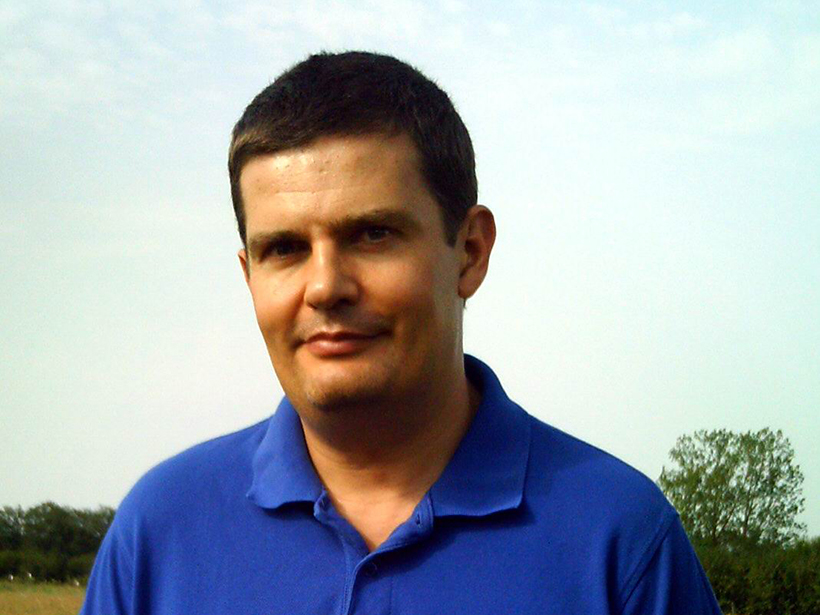Dimitri Komatitsch, a visionary computational geophysicist, passed away unexpectedly on 21 January 2019, at the age of 48.
Komatitsch remained at the forefront of computational science and engineering, always eager and ready to capitalize on the latest opportunity in high-performance computing.
Over the course of a career that started when he was a Ph.D. student at the Institut de Physique du Globe in Paris under the tutelage of the late Albert Tarantola and Jean-Pierre Vilotte, Komatitsch helped shape modern computational seismology. He contributed tirelessly to the development and popularization of the spectral element method, a high-order finite-element method well suited to fast parallel simulations of seismic wave propagation, and freely distributed his software to the international seismological community. These tools are used extensively in both academia and industry.
Komatitsch was born on 28 March 1970 in Pau, France, and went to high school in Pau and Paris. During his graduate study he started to work on the spectral element method and its numerical implementation on modern parallel computational platforms to address problems in seismology. This research culminated in a seminal paper with Vilotte, published in the Bulletin of the Seismological Society of America, that has been cited more than a thousand times.
In 1999, Komatitsch moved to Harvard to work with Jeroen Tromp on the development of a practically usable code to compute synthetic seismograms in 3-D Earth models. In 2000, he moved to the California Institute of Technology, where he was instrumental in building a pioneering PC cluster to facilitate large-scale parallel simulations of seismic wave propagation.
Komatitsch remained at the forefront of computational science and engineering, always eager and ready to capitalize on the latest opportunity in high-performance computing. He moved back to France in 2004, becoming a professor and head of the geophysics laboratory at the University of Pau.
In 2010, Komatitsch joined the University of Toulouse, and in 2011 he moved to the Laboratoire de Mécanique et d’Acoustique in Marseille as a senior research director with the National Center for Scientific Research. There, he worked on the interface of applied mathematics, solid Earth geophysics, acoustics, and high-performance computing. His research interests spanned forward and inverse acoustic-elastic problems on local, regional, and global scales. In recent years he had become interested in applications of the spectral element method to ultrasound problems in medical imaging and nondestructive testing.
Computational Visionary
Komatitsch was a member of the Institut Universitaire de France and the scientific steering committee of the Partnership for Advanced Computing in Europe. In recognition of his transformative contributions to the numerical modeling of seismic wave propagation on state-of-the-art high-performance computing architecture, he received the Gordon Bell Prize in 2003, the BULL Joseph Fourier Award in 2009, the Atos-Bull Prize in 2010, and a Simone and Cino Del Duca Foundation Award in 2013.
Komatitsch was among the first geophysicists to recognize the power of computing on graphics cards, thereby enabling 3-D full waveform inversion in earthquake seismology. The implementation of his vision for computational seismology is on full display in a highly cited review article in the Geophysical Monograph Series of AGU. Thanks in large part to Komatitsch, numerical modeling has become an integral part of modern seismology.
Open-Source, Collaborative Research
Komatitsch exemplified the notion of open-source research and was extremely generous with his time for others, in particular students and postdocs.
Komatitsch exemplified the notion of open-source research and was extremely generous with his time for others, in particular students and postdocs. He would patiently answer questions from the users of his tools, and he relished diverse collaboration.
Komatitsch masterfully combined geophysics, applied mathematics, numerical modeling, and high-performance computing to tackle seemingly difficult seismological problems. His work affected the lives and scientific productivity of countless AGU members and other colleagues around the world. His legacy will live on in those he empowered and through his papers and computational tools.
Dimitri Komatitsch is survived by his partner, Marie; twin daughters, Emma and Louise; his sister, Nathalie; and his parents, Eliane and Jean-Marc.
—Jeroen Tromp, Princeton University, N.J.; and Sebastien Chevrot, Observatoire Midi-Pyrénées, Toulouse, France
Citation:
Tromp, J.,Chevrot, S. (2019), Dimitri Komatitsch (1970–2019), Eos, 100, https://doi.org/10.1029/2019EO118653. Published on 20 March 2019.
Text © 2019. The authors. CC BY-NC-ND 3.0
Except where otherwise noted, images are subject to copyright. Any reuse without express permission from the copyright owner is prohibited.

